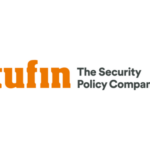Published November 2nd, 2023 by Avigdor Book
In the era of digital transformation, cloud workload security is paramount in the cybersecurity landscape. Organizations are transitioning from on-premises infrastructures and data centers to public and private cloud architectures, empowered by the scalability and automation capabilities of cloud computing. However, this shift introduces new security challenges and vulnerabilities, underscoring the necessity of an effective cloud workload security strategy.
From On-Premises to Cloud Environments: A Paradigm Shift
Transitioning from on-premises systems to cloud infrastructures is intricate, introducing its own cloud security challenges. The scalability, cost-effectiveness, and automation offered by cloud environments make them attractive, yet they also increase the attack surface for potential hackers. A simple misconfiguration, overlooked vulnerability, or weak security control can leave your cloud workloads exposed.
Why is Cloud Workload Security Crucial?
When workloads move to the cloud, they encounter a plethora of threats. Without adequate cloud security guardrails, even a seemingly harmless action can turn into a full-blown security breach. Cloud workload security is about more than just protection; it’s about integrating real-time security into rapidly evolving cloud environments and managing your security risks.
Cloud workload security is vital for establishing a proactive security posture that coalesces with your DevOps practices and adapts to the dynamic nature of cloud services. It entails more than just erecting a firewall; it involves elements like network security, endpoint protection, vulnerability management, and permissions management.
Leveraging Multi-Cloud and Hybrid Cloud Security
Adopting a multi-cloud security strategy offers an all-encompassing approach to securing your cloud workloads across different cloud service providers. Furthermore, for organizations operating in hybrid environments – a combination of cloud and on-premises operations, a hybrid cloud security strategy is imperative. Implementing a robust solution like Tufin SecureTrack+ ensures consistent security across all workloads, reducing the attack surface.
Navigating the Cloud Workload Security Market
The cloud workload security market is constantly evolving, pushed by the advanced needs of businesses and an ever-changing threat landscape. As per Gartner’s insights, integrating cloud workload security solutions into your infrastructure is vital. Delving into various market offerings and understanding different use cases can aid in making an informed decision that best suits your organization’s needs.
Conclusion
Cloud workload security is a significant aspect of the digital transformation journey. Grasping its importance, assessing your vulnerabilities, and incorporating robust security solutions into your strategy can drastically curtail the risks associated with migrating workloads to the cloud. By navigating this intricate landscape, your organization can confidently harness the unlimited potential of the cloud.
Continue exploring our blog for more insights and sign up for a demo of our innovative security solutions to protect your cloud workloads.
FAQs
Q: What is workload security in the cloud?
A: Workload security in the cloud involves measures to protect your data, applications, and services (workloads) running on cloud platforms from threats. It includes deploying security policies, using machine learning for threat detection, and implementing controls to guard against cybersecurity risks.
Read more about cloud workload security here
Q: What are cloud workloads vulnerable to?
A: Cloud workloads are vulnerable to a multitude of threats, including data breaches, malware, misconfigurations, insider threats, and API vulnerabilities. Cloud Security Posture Management (CSPM) can help identify and remediate these vulnerabilities.
Learn about potential vulnerabilities and how to mitigate them here
Q: Why is cloud workload protection important?
A: Cloud workload protection is vital for maintaining the integrity, confidentiality, and availability of workloads in the cloud. It’s a cornerstone of an organization’s overall cybersecurity strategy, enabling them to enjoy the benefits of cloud adoption without compromising security. It encompasses elements like microsegmentation, application security, and SIEM integrations.
Q: Who offers Cloud Workload Protection Platforms (CWPP)?
A: Prominent cloud providers like AWS, Microsoft’s Azure, and Google Cloud offer 3rd party security tools to protect your cloud workloads. These tools often incorporate a CWPP to safeguard your cloud-native applications from malware and ransomware. CWPPs provide broad security coverage, from virtual machines (VMs) and container security to Kubernetes orchestrations, considering varying operating systems like Linux.
Discover why cloud workload protection is vital for your business here

Don't miss out on more Tufin blogs
Subscribe to our weekly blog digest









